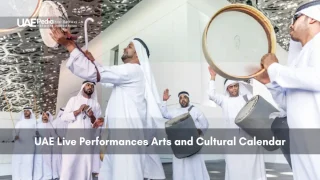What if we told you one of the world’s most futuristic cities holds whispers of centuries-old craftsmanship in plain sight? Beyond the gleaming skyscrapers, a network of unassuming spaces safeguards relics that bridge continents and eras.
These curated spaces—scattered like hidden oases—blend Arabesque patterns with Art Deco elegance. You’ll find Moroccan lanterns casting shadows beside Japanese tea sets, each piece whispering tales of trade routes and cultural exchange. The air hums with the weight of stories waiting to be claimed.
Local experts here don’t just sell objects—they decode them. One vendor recently traced a silver compass back to 1920s Bombay shipyards; another restored Ottoman calligraphy panels for a Parisian designer. It’s this alchemy of preservation and reinvention that makes every visit a dialogue between past and present.
- Cultural crossroads: Discover how global influences shape regional collecting trends
- Provenance matters: Learn to spot pieces with documented histories versus creative reproductions
- Future heirlooms: Why today’s mindful acquisitions become tomorrow’s legacy items
Exploring the Legacy of Dubai Antique Shops
Beyond the glass towers, a different kind of wealth awaits—centuries-old craftsmanship preserved in curated spaces. These showrooms feel like time capsules, where Syrian mother-of-pearl inlay tables sit beside Portuguese nautical chests. Each piece whispers secrets of desert caravans and ocean voyages.
Diverse Collections and Cultural Heritage
You’ll find furniture that defies eras here: Art Nouveau chairs reupholstered with Emirati textiles, mid-century consoles paired with Omani silver bowls. “We’re not just selling objects,” explains a restorer buffing a 1930s Indian rosewood desk. “We’re bridging how people lived then with how they want to live now.”
Textures tell half the story. Run your hand across a Berber wool rug’s uneven weave—each knot tied during winter nights. Smell the cedarwood drawers of a restored Persian armoire. These tactile experiences turn browsing into time travel.
Stories Behind Functional Art
That brass coffee set? It fueled debates in a 1940s Cairo salon. Those mosaic lamps? They lit a Beirut poet’s midnight writings. Dealers here document origins like biographers, tracing decorative objects from Istanbul workshops to modern lofts.
Modern restorers add new chapters. One team recently revived Ottoman-era parquet flooring using traditional hide glue. Another transformed shattered Chinese porcelain into contemporary wall art. This dialogue between past and present keeps heritage alive—and collectible.
Why Dubai Antique Shops Are a Collector’s Paradise
Imagine stepping into a space where every shelf holds whispers of history and every corner reveals global artistry. This is where seasoned collectors and curious newcomers find pieces that spark conversations across generations. Let’s explore what makes these curated spaces magnetic.
Uncovering Rare Treasures and Decorative Objects
At Windmill Antiques, you’ll find 19th-century Arabian astrolabes beside Art Deco barware—a mix that reflects the city’s role as a cultural crossroads. Their star piece? A 1930s Persian rug woven with gold thread, displayed beside mid-century Danish chairs. It’s this unexpected pairing that defines the thrill of discovery.
Cabinet of Curiosity takes a different approach. Their collection includes Ottoman-era lockboxes with hidden compartments and Edo-period Japanese screens. “We source items that survived wars, migrations, and changing tastes,” says their lead curator. Each piece comes with documentation tracing its journey from maker to modern-day guardian.
| Shop Name | Specialty | Notable Find | Price Range |
|---|---|---|---|
| Windmill Antiques | Cross-cultural furniture | 1920s Moroccan wedding chest | $1,200–$18,000 |
| Cabinet of Curiosity | Historical artifacts | Qajar dynasty silver mirror | $850–$25,000 |
| The Workshop | Restored decorative items | Art Nouveau chandelier (rebuilt) | $2,500–$12,000 |
Insights from Top Dealers and Museums
Local experts bridge past and present through stories. At The Workshop, restorers partner with Louvre Abu Dhabi conservators to preserve Mughal-era ivory carvings. “We don’t just clean objects—we decode their DNA,” explains a specialist, holding a newly authenticated 18th-century Syrian coffee grinder.
These spaces thrive on variety. One day you might find Berber jewelry displayed beside Bauhaus lamps; the next, a 17th-century map of trade routes. For those seeking the best collectibles spots, it’s this ever-changing inventory that keeps enthusiasts returning.
Navigating the Antique Market in a Cosmopolitan Hub
Walking into these treasure-filled spaces feels like decoding a global puzzle—where whispers of history meet modern market savvy. Whether you’re browsing sleek galleries or labyrinthine souks, knowing how to navigate ensures you leave with more than just a receipt.
Tips for Authenticity and Bargaining Strategies
Start by examining joints and patinas. Authentic antique furniture shows wear patterns that tell its age—uneven dovetail joints, oxidation under handles. One restorer advises: “Check for maker’s marks with UV light—many reproductions skip this detail.” Always request certificates from accredited appraisers, especially for pieces over $5,000.
Bargaining thrives on relationship-building. In upscale cabinet displays, polite haggling might secure free shipping. At open-air markets, smile and ask: “What’s your best price for a serious buyer?” Many shops also offer trade-ins for repeat customers—swap older finds for fresh discoveries.
- Verify import rules early: UAE allows most items over 100 years old, but ivory or certain woods require permits
- Snap photos of serial numbers—cross-check them with museum databases during your search
- Watch for hybrid deals: Some sellers also offer installment plans on high-ticket pieces
Neighboring markets like Abu Dhabi add depth to your hunt. A collector recently found 19th-century Syrian tiles there priced 20% lower than in larger cities. Remember: every negotiation is a dance—step confidently, but leave room for the seller’s rhythm.
Final Reflections on Rediscovering Timeless Treasures
In a city where the future meets the past, every rediscovered treasure becomes a bridge between eras. The curated spaces we’ve explored don’t just house objects—they pulse with stories that reshape modern living. Imagine running your fingers across a 19th-century carpet woven with gold threads, its patterns echoing nomadic journeys now displayed in a minimalist loft.
These pieces do more than fill a room—they redefine it. A hand-carved wooden screen becomes a room divider that whispers of Mughal gardens, while Art Deco lamps cast shadows on contemporary walls. It’s this alchemy of old and new that turns houses into homes layered with meaning.
What makes these finds truly special? Their ability to speak across generations. Each item carries the fingerprints of artisans and the imprints of previous owners, creating value that outlasts trends. Whether you’re drawn to vibrant textiles or sleek metallic accents, there’s space here for every style narrative.
For those ready to begin their hunt, remember: you’re not just acquiring decor. You’re safeguarding cultural dialogues and craftsmanship that refuse to fade. So pack your curiosity and step into these troves—where every discovery adds a rich chapter to your own story.
Look for shops with certificates of provenance or partnerships with museums. Reputable dealers often share detailed histories of pieces—ask about restoration work, origin stories, and materials. For high-value items, consider third-party appraisals or consult experts at cultural hubs like Sharjah’s Heritage Museum.
Start by asking for 20-30% off listed prices, but stay respectful—many dealers are passionate custodians of history. Cash payments sometimes unlock better deals. Avoid haggling in high-end showrooms; their pricing reflects rarity and craftsmanship.
Absolutely! From Ottoman-era textiles to pre-Islamic ceramics, the city’s shops are treasure troves. Specialized stores stock 19th-century Arabian coffee pots, Persian carpets, and even vintage Kuwaiti chests. For Bedouin jewelry or pearl diving tools, visit Al Fahidi Historical District.
Yes—seek out stores showcasing sadu weavings, palm-frond baskets, or silver khanjars (daggers). Some dealers focus on pre-oil-era items like wooden doors from wind towers or manuscripts documenting Gulf trade routes. These pieces connect you directly to the region’s past.
Dubai offers a wilder mix of global finds, while Abu Dhabi leans toward curated Islamic art and archaeological reproductions. For example, the Louvre Abu Dhabi’s boutique sells museum-quality replicas, whereas Dubai’s Creek-side shops might surprise you with African masks beside French armoires.
Many provide in-house workshops to repair furniture, re-stretch carpets, or polish silver. For delicate tasks like restoring Arabic calligraphy or repairing majlis cushions, ask dealers for trusted artisans. Always review before/after portfolios to assess their craftsmanship.



















